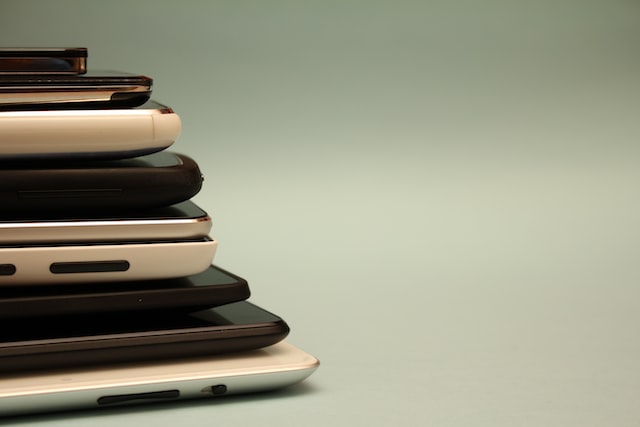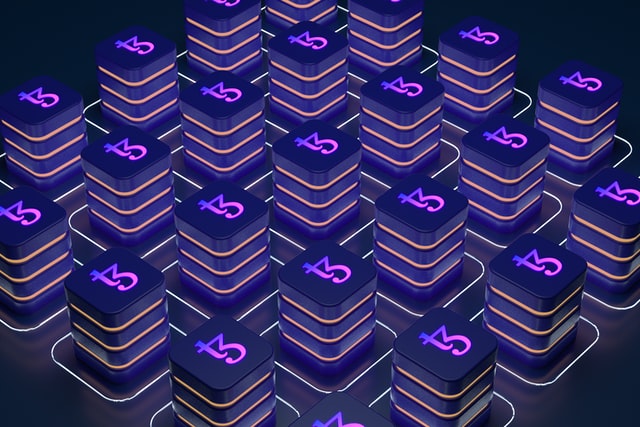Phones have become a massive part of our everyday lives in the last two decades as phones begin to evolve continuously at an exceeding rate. When it comes to phones, there are too many companies and variations to choose from. There have been many existing conflicts comparing phones from one company to another, but the selection of phone models depends solely on the preferences and needs of the users. Different phone companies have different focuses and benefits for their users. This blog will compare Apple (iPhone), Google (Android), Microsoft (Windows Phone), and Nokia phone products, their benefits, and qualities to identify the model best for you.
History
Nokia was one of the leading phone companies at the very beginning. Founded in 1865, Nokia was a company under multiple businesses such as electric pieces, computers, TVs, etc. In 1982, the company transitioned from a business empire into the phone-making industry by producing the first car phone, a portable radio station, and later the mobile phone capable of making phone calls. Over a series of phone innovations in the 1990s, from innovative flip phones to the N800 Internet Tablet that was capable of 4GB storage and battery lasting 3 hours.
While Nokia was still under the pressure of competing against other phone companies such as RIM’s Blackberry, Apple’s iPhone began to rise in popularity for its incomparable computing power and design. Google began following in the success of Apple by releasing its own smartphone operating system Android. Windows also began developing its own phone systems to compete against iPhones and Android but was incapable of doing so. As a result, Windows partnered up with Nokia to develop and improve mobile productivity and collaboration tools to gain a competitive advantage.
Basic Features
Application Accessibility
Apple was the first company that began engaging in mobile phone applications to make devices accessible for multiple functions. Apple built an environment that encouraged app developers to create a variety of different apps in Apple’s AppStore that is capable of running in any iOS operating system. The AppStore was designed for the applications to be accessible by anyone, either for free or comes with a low price.
However, Apple may be the first but is not the only company that created a system for app development. Android phones also rose to the occasion and developed the Google Play Store that would function similar to AppStore. However, because there are so many different android phone companies and smartphone types, it takes a long process to ensure that the applications from the Google Play Store are able to accommodate all devices. At the same time, Android phones are also able to accommodate applications from third-party applications outside of the Google Play Store, which makes
In an effort to compete against Apple and Google, Microsoft launched the Windows Store on Windows mobile phones. The Windows Store may be small and not have as many applications as the vast variety with AppStore and Google Play Store but the Windows phone was designed for developed to easily create, host, and sell applications compared to the other two systems.
Nokia, in contrast to the other three competitors, did not have an extensive selection of applications that are functional on smartphones. As a result, Nokia decided to partner with Microsoft to adopt the Windows Mobile application that would take the place of their initial application service.
System Design - From A User’s Perspective
Android platforms are designed to display applications on their home screen, as well as allow the user to easily move or delete applications based on their preferences, with the exception of the Dialer, Application Tray to access all apps, and the Web application. Android permits users with 5 panes that they can design and switch between to access applications, widgets, files, etc. It may be difficult to find certain Android applications and functions, which require tough navigation between applications to access the application.
On the contrary, the primary purpose of iPhones is to make the system's functionality simple for users. iPhone home screens are designed with applications in a grid-like fashion and are able to flip through different panels similar to android. With iPhones, users can have up to 11 home screens and group application icons or group them when pressing onto any icon.
The design of the windows phone is completely different compared to both android and iOS systems. Windows phones are designed to display application icons with vertical lists rather than taking over the entire screen. Windows phones are the least customizable and only limit users to two screens. Its simplicity is comparable to iPhones but does not hold much functionality compared to the other competing companies.
Data Integration Features
Android devices are centralized around Google applications such as Google Calendar, Gmail, Google chat, etc. However, it is more difficult to synchronize data from one Android device to another, unless using a third-party application. Apple phones, in comparison, have applications that are integrated with its system such that devices with the same apple ID are able to synchronize any of its apple applications by user choice. At the same time, Windows phones were heavily integrated with Microsoft products including a mobile version of Word, Excel, etc. However, Windows does not work well with applications from other companies and does not integrate properly with its system. It is also unable to allow connection via Wi-Fi, USB, or Bluetooth like iPhones and Android devices.
Data Encryption
Android devices automatically encrypt the data when the device is stored on the phone disk and decrypted when accessed by the device. Android devices use file-based encryption and full-disk encryption. File-based encryption is when individual files in the device require a different encryption key to protect user personal data. Metadata encryption follows the file-based encryption process and decrypts additional information associated with the file such as the file size and time stamps. Full disk encryption only uses one key that can be accessed and decrypted with a user-provided password to decrypt all files under full-disk encryption.
Apple devices also use two main encryption methods: encryption in transit or end-to-end encryption. Encryption in transit means that the data is encrypted as the data is being stored in the device while the encryption key is maintained in Apple data centers. With end-to-end encryption, the information is encrypted based on the passwords the user sets onto the device, and keys can only be accessed when users enter the correct passcode.
Comparing Operating Systems
Android
At first, Android phones have not posed a threat to iOS systems because of their speed and security concerns. However, with the collaboration of multiple manufacturing companies, Google improved its software and revealed Samsung Galaxy S3, which allowed Android systems to hold the upper hand against iOS.
Android is an open platform system that supports multitasking on the device. Android devices are mainly centralized around Java as a programming language, but are also well adapted to other languages, such as C# and programming in C, and run a variety of scripting languages such as Python and Perl. Their systems are easier to debug and provide development software developer kits for anyone to access frameworks to develop an application. They are able to receive faster and more immediate updates on their systems. One main benefit of Android phones is that it does not have many limitations in adjusting their systems. One is easily able to override systems with applications and support any widgets to customize the phone to the user’s preferences.
In terms of security, Androids are not the most secure. Because it is open-source, there is no regulation for hackers. Many are able to take advantage by building harmful applications that may infect the device if the user is not cautious enough.
iPhone
In comparison to Android, iOS systems on Apple phones are more limited. iPhones use a close platform system and are not as advanced as Android. While some iPhones support multitasking abilities, many apps are not capable of doing so. iPhones are programmed in Objective C and limits only application developed with knowledge of Objective C to develop their apps. However, not all applications are able to be released freely in the Apple Store. There are a lot of requirements and rules that applications must follow to successfully pass the system.
Recently, iPhones have begun to improve in terms of users' ability to customize and design phones with certain limitations. Currently, newer iOS versions are able to adapt to customizable widgets and phone/application design through apps in the AppStore that is capable of the function. iPhone updates over a longer course of time compared to other phone companies, given how costly iPhones can be. However, this should be the extent to which Apple would allow their users to go, as compared to Androids.
iPhones use iOS systems that are very secure. Apple develops a system that limits what hackers can do to access or cause harm to the device. In addition, apple provides regular updates to keep its system in check and impregnable to hackers. There are constant system updates to strengthen the security of the phone and its system's ability to limit user interaction with harmful sources.
Nokia
Nokia phones, the most well-known phone being Symbian, is able to support cross-programming languages such as C++ and Java. Initially, users are able to build their own applications just like creating a webpage with HTML and are capable of interacting through an application platform. However, Nokia phones are not unique as it replicates similar features from iPhones and Androids. Current Nokia phones are adapted to Android operating systems.
Windows Mobile Phones
Windows mobile phone is a closed platform system that is programmed with Silverlight and XNA. It has many limitations and does not support multitasking or downloading third-party applications. Windows phones receive continuous regular updates for several generations. As of currently, windows mobile phones have been discontinued in production and adaption, thus not many improvements can be made to present windows phones.
iPhones v. Android
Apple and Google have become one of the biggest major phone production competitors over the past few years, kicking out all competition at the same time. At the very end of the day, many would argue to choose between androids or iPhones. But which one is better? Which is more suitable for the user? This all depends on the type of device and qualities one is looking for. In terms of elegances and simplicity, iPhones are the better choice, perfectly merging the software and hardware function to allow the simple functionality of a phone. Compared to iPhones, Androids give more freedom, especially for programmers, to develop and customize functions that serve their personal needs. Apple phones, for better or worse, are more costly and designed to have a “classy” appearance. In comparison, Android phones may vary in all shapes and sizes, depending on the company you are searching for.
Sources
https://joyofandroid.com/smartphone-wars-apple-vs-google-vs-microsoft-vs-nokia/
https://bytebitebit.com/2553/android-apple-windows-phones-comparison/
https://www.codeproject.com/Articles/73089/Comparison-of-Android-vs-iPhone-vs-Nokia-vs-BlackB
https://vinzite.com/a-comparison-between-ios-windows-phone-and-android-os/
https://www.zdnet.com/article/how-nokia-went-from-mobile-powerhouse-to-windows-phone-maker/
https://www.techspot.com/article/2236-nokia/
https://developerexperience.io/practices/software-development-kit
https://source.android.com/docs/security/encryption





